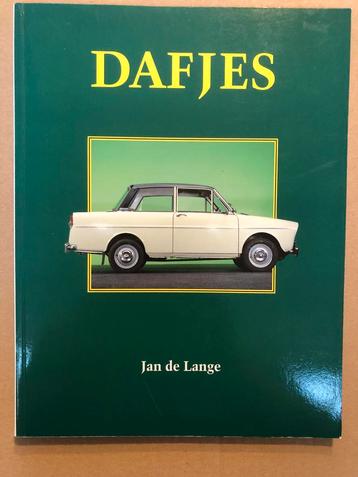

Bonnefantenmuseum - Hao Liang - The Virtuous Being
Kenmerken
Beschrijving
BESTELLEN KAN ALLEEN DOOR TE KLIKKEN OP DE LINK RECHTS IN DE ADVERTENTIE VIA MIJN WEBSHOP. PLAATS UW BESTELLING IN HET WINKELMANDJE. VERZENDEN EN AFHALEN ZIJN MOGELIJK (IN HET KEUZE-MENU ) EN BIJ MEERDERE PRODUCTEN WORDEN AUTOMATISCH SLECHTS 1X VERZENDKOSTEN BEREKEND.
BETALING VIA IDEAL OF PAYPAL.
OOK VERZENDING NAAR BELGIË IS MOGELIJK (BETALING VIA PAYPAL). UW BESTELLING WORDT UITERLIJK 1 WERKDAG NA BESTELLING VERZONDEN. EEN TRACK EN TRACE CODE KRIJGT U VAN MIJ DOOR.
KIJK OOK EENS NAAR MIJN ANDERE ADVERTENTIES. VAAK HEB IK VAN EEN BEPAALD ONDERWERP DIVERSE BOEKEN OP VOORRAAD – SCHEELT IN VERZENDKOSTEN.
Gebonden met stofomslag in nieuwstaat, zonder inschrijvingen.
- 2018
- The Pavillon
- 156 blz.
Haoliang: The Virtuous Being weaves together multiple threads to present and ponder upon Hao Liang’s creative practice in the recent years. These threads sometimes run parallel with one another, other times progress or return from one to another. This book starts from The Virtuous Being created between the years of 2013 and 2015, then enters the space of From Xian to Gui via The Aura, created in 2016, and ends with The Eight Views of Xiaoxiang as a gradual fade-out.
The Project of The Virtuous Being originates from the interests and research around Chinese gardens and the literati spirit, The Scroll of the Virtuous Being was inspired by Wang Shizhen’s private garden Yanshan Garden (or Garden of Yan hill), whose winding paths and vicissitudes in history weave together the narratives in the scroll. Parallel to the scroll, The Study on the Virtuous Being comprises of abundant archive materials, print matter, rubbings, manuscripts and photography.
The search for “qi’xi” (breath, air) encouraged Hao Liang to revisit Benjamin’s theory of the “aura”. With collotype as a metaphorical mirror, Hao Liang tries to capture the innate “qi’xi” of the paintings and reflect back upon painterliness using print. As for the source of images in Aura’s collotype works, they all come from Hao Liang’s encounters with “antiques” — could be in museums, or from the collections of friends — they emerge from the mass of historical relics, each one of them is adequate to make one think of the time and fate hidden behind, and Hao Liang is situated right at the intersection of all these different timelines.
In the series of works in From Xian to Gui, Hao Liang tries to reach the other side of the DNA double spiral of the literati spirit via portrait paintings: if we say that Shanshui Painting attempts to approach the “dao” of everything by portraying nature, then we can say that portrait paintings observe the “qi’xi” of creation through portraying the self. Hence, portrait paintings also share the same idea of “chuan’shen” (conveying the spirit, lifelike) in the genealogy of Chinese painting.
In contrast to the expression of personal feelings, Hao Liang is more concerned with understanding the things that have to be “thought,” and in this process his research is a means for slicing into reality, while the reconstruction of space is one of his narrative methods. This detour into the genealogy of Chinese garden painting is a way of interrogating and intervening into the individual psyches of different historical moments. As such, “Virtuous Being” is not only about the reconstruction of long-gone literati gardens, it is also about seeking out and rebuilding the long-lost perceptual mechanisms behind Chinese literati painting.
Het Project of The Virtuous Being komt voort uit de interesses en het onderzoek rond Chinese tuinen en de literatorische geest. The Scroll of the Virtuous Being werd geïnspireerd door Wang Shizhen's privétuin Yanshan Garden (of Garden of Yan Hill), waarvan de kronkelende paden en wisselvalligheden in de geschiedenis verweef de verhalen in de boekrol met elkaar. Parallel aan de boekrol bestaat The Study on the Virtuous Being uit overvloedig archiefmateriaal, drukwerk, rubbings, manuscripten en fotografie.
De zoektocht naar ‘qi’xi’ (adem, lucht) moedigde Hao Liang aan om Benjamins theorie van de ‘aura’ opnieuw te bekijken. Met collotype als metaforische spiegel probeert Hao Liang de aangeboren ‘qi’xi’ van de schilderijen vast te leggen en met behulp van drukwerk terug te reflecteren op de schilderkunst. Wat de bron van de afbeeldingen in de collotypewerken van Aura betreft: ze komen allemaal voort uit Hao Liangs ontmoetingen met ‘antiek’ – zouden zich in musea kunnen bevinden, of uit de collecties van vrienden – ze komen voort uit de massa historische relikwieën, elk ervan is adequaat om je te laten denken aan de tijd en het lot dat erachter verborgen ligt, en Hao Liang bevindt zich precies op het kruispunt van al deze verschillende tijdlijnen.
In de reeks werken in From Xian to Gui probeert Hao Liang via portretschilderijen de andere kant van de dubbele DNA-spiraal van de literatorengeest te bereiken: als we zeggen dat Shanshui Painting de ‘dao’ van alles probeert te benaderen door de natuur in beeld te brengen , dan kunnen we zeggen dat portretschilderijen de “qi'xi” van de schepping observeren door het zelf af te beelden. Daarom delen portretschilderijen ook hetzelfde idee van ‘chuan’shen’ (het overbrengen van de geest, levensecht) in de genealogie van de Chinese schilderkunst.
In tegenstelling tot het uiten van persoonlijke gevoelens houdt Hao Liang zich meer bezig met het begrijpen van de dingen die moeten worden ‘gedacht’, en in dit proces is zijn onderzoek een middel om in de werkelijkheid te snijden, terwijl de reconstructie van de ruimte een van zijn narratieven is. methoden. Deze omweg in de genealogie van de Chinese tuinschilderkunst is een manier om de individuele psyche van verschillende historische momenten te ondervragen en erin te grijpen. Als zodanig gaat ‘Virtuous Being’ niet alleen over de reconstructie van lang vervlogen literatortuinen, maar ook over het zoeken en opnieuw opbouwen van de lang verloren gegane perceptuele mechanismen achter de Chinese literatorschilderkunst.

